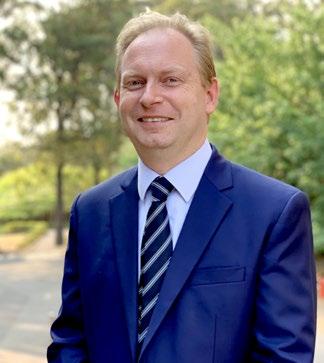
3 minute read
It Takes a Village – Welcome from Head of School, The King’s School, Tudor House
from 2020 Gazette
TUDOR HOUSE
It Takes a Village
Welcome from Anni Sandwell, Head of School, The King’s School, Tudor House
It takes a village to raise a child…is a familiar adage. When Wilfred Inman moved the School he established in 1897 in Sydney’s Eastern Suburbs to Hamilton House, Moss Vale in 1902, he created the foundations of the village that was to become The King’s School, Tudor House.

A village is, by dictionary definition, a group of houses and associated buildings larger than a hamlet and smaller than a town, situated in a rural area. The word ‘village’ is derived from the Latin, villa, a country house. Tudor House students, past and present, have benefited greatly from belonging to this village.
Each year we invite King’s Year 12 Old Tudorians to a Reunion Day at Tudor House. Conversation is often centred around the sentiment, so aptly summarised in a quote on a plaque in Anderson Courtyard, You don’t know what you’ve got until it’s gone. Cesare Pavese (1935) said, “You need a village if only for the pleasure of leaving it. A village means you are not alone, knowing that the people, the trees, the earth, there is something that belongs to you, waiting for you when you are not there.”
By definition, a settlement earns the right to become a village when you build a church. Our School Chapel is a village meeting place, at the core both physically and metaphorically, of our Christian community. It is a place where we’ve focused this year, particularly on the School Values: Compassion, Honesty, Humility, Integrity, Respect, Responsibility so that we may become the most Excellent version of ourselves. These Values provide a common thread throughout our community, binding us together. In addition to the Chapel, our village is made up of community centres - the War Memorial Hall (Assembly Hall), Dining Room, Library, Hamilton Lawn (the village green), Anderson Courtyard, playing fields and extensive grounds with dams, swimming pool, sports courts, gym, low ropes course and more. The 24/7 residents in the village, boarding students and staff in cottages, provide a soul for the community outside regular school hours. The Village is organised by a network of groups, committees and teams, passionate about ensuring that the community flourishes, from The King’s School Council and Executive to ‘local’ groups, the Tudor House Foundation and Working Group, the Tudor House Exec, teachers, Tudor Rose Auxiliary and TAG (Tudor House Action Group) our student representative group who make commendations and recommendations about our community life.
Mr Inman’s motivation to move his recently established School away from the city in 1902 was to provide opportunities for the students not available in the city. He is quoted as saying “that for children to succeed, they need to develop a mindset to ‘learn to learn’ by being placed in an environment rich in quality resources, ensuring students’ minds are open to the amazing opportunities in life.” Indeed, it is as if he anticipated the International Baccalaureate Learner Profile, a list of attributes that promote academic rigour and the establishment of a personal value system leading to international-mindedness. The Learner profile guides and underpins our practice as global educators today. As a Candidate PYP School, we set-up students to succeed, to love learning if they’re balanced, caring, communicators, inquirers, knowledgeable, open-minded, principled, reflective, risk-takers, thinkers. These soft skills (as they’re often referred to), do not go out of date and promote enduring understanding.
Tudor House students, ‘live’ the learner profile. Academic excellence is our core business. Learning at Tudor House takes place both within and outside the confines of regular classrooms. Inman established a School where achievements were celebrated, next steps in learning were supported and very importantly he saw the importance of providing a place where students and their families belong, a community of learners.
We are very conscious that it is our responsibility to prepare our students for an ever changing world beyond the jewel of the Southern Highlands. Our learners have the advantage of being ‘schooled’ in state-of-the-art classrooms and conventional teaching spaces. By belonging to a community with extraordinary experiences, students are provided with opportunities to develop advantageous character traits, equipping them to be thought leaders of the future, aware that their contributions can make the world a better place.










